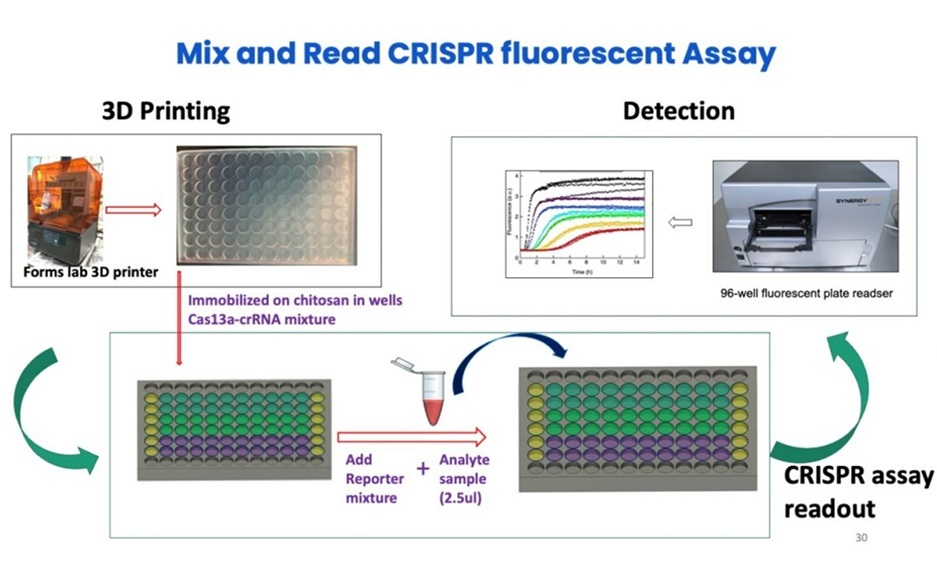Survey Identifies More Genetic Flaws Linked to Glioblastoma
By LabMedica International staff writers
Posted on 16 Sep 2008
A massive genetic survey of glioblastoma has identified an array of broken, missing, and overactive genes, some for the first time. Glioblastoma is the most common and deadly form of adult brain cancer. In the year 2008, at least 21,000 new cases of brain cancer will be diagnosed in the United States, and more than 13,000 are expected to die from the disease.Posted on 16 Sep 2008
Systematic multi-dimensional genomic studies of patient samples of glioblastoma began in 2006 as a pilot project of the cancer genome atlas (TCGA; Bethesda, MD, USA) program. The pilot is designed to determine the feasibility of a full-scale effort to systematically explore the universe of genomic changes involved in all types of human cancer and to demonstrate the values of such efforts in advancing cancer knowledge and improving patient care.
Scientists from the Dana-Farber Cancer Institute (Boston, MA, USA) and the Broad Institute of the Massachusetts Institute of Technology and Harvard (Cambridge, MA, USA), together with collaborating investigators at 18 institutions and organizations participated in the survey. The findings, posted online by the journal Nature on September 4, 2008, solidify and expand the "parts list” of genetic flaws linked to glioblastoma multiforme (GBM).
The report in Nature summarizes the interim analyses of data gathered in the GBM pilot study. "The findings of significant mutations in genes that have implications for therapeutic development illustrate precisely how unbiased and systematic cancer genome analyses can lead to paradigm-shifting discoveries,” said Dr. Lynda Chin, a scientist from Dana-Farber and Harvard Medical School (HMS; Boston, MA, USA), who chairs the GBM disease-working group within TCGA.
Dr. Matthew Meyerson, from Dana Farber, HMS, and Broad, co-author of the Nature report added, "These data show that this approach, of looking at large numbers of tumors and a large number of genetic factors, can be done and the results are really valuable. We have made significant novel findings, and the reproducibility of the data is high.”
In the multi-center study, collaborating teams analyzed 206 specimens of glioblastoma tissue donated by patients at four medical centers. Their approach was "multidimensional"--looking for several categories of flaws simultaneously. These included mutations -- "typos” in the DNA code of a gene that alters its function, too many or too few copies of a given gene; damage to chromosomes causing loss or dislocation of pieces; gene activity that is higher or lower than normal; and changes in DNA methylation -- turning genes on or off without affecting their structure. The investigators also had access to information on how the patients who donated the samples had fared, including how they responded to certain drugs.
Automated machines at three genome sequencing centers, including the Broad Institute center, were used to read the DNA messages in the cancer cells' nuclei. Of the roughly 20,000 protein-coding genes in the tumor cells, the GBM disease-working group selected 601 genes for detailed sequencing and comparison. A second installment of genes is already being sequenced, and Dr. Chin and her group are working on additional gene lists for mutational analyses.
Five major gene mutations were previously identified in glioblastoma cells; the new sequencing effort revealed three that had not been discovered. One mutation affects the NF1 gene, which causes neurofibromatosis. A second mutation is in the ERBB2 gene known to be involved in breast cancer. The third affects a gene in the PIK3 signaling pathway that is abnormally activated in a number of cancers, but this particular gene, PIK3R1, had been only rarely implicated in any cancer. "Each of these mutated genes defines a new target for glioblastoma treatment,” said Dr. Meyerson.
According to Dr. Chin, the most exciting finding is that the multipronged study design also enabled the scientists to make a potentially important connection between a methylation change in the glioblastoma cells and which drugs should be used for treatment. Brain tumors that contain a methylated, or silenced, form of a gene known as MGMT are known to be more susceptible to cancer drug temozolomide (Temodar). Therefore, Temodar is routinely given along with radiation to patients with MGMT methylation. However, the analysis of methylation in the glioblastoma tumors, when matched with the patients' medical history, revealed a new finding. When such patients were treated with Temodar and subsequently had a recurrence of the tumor, it was very likely to become resistant to treatment because of "hyper mutation" -- an increased rate of gene changes that led to the tumor's ability to evade the drugs.
This research complements a parallel study by Johns Hopkins investigators of 22 GBM tumors, which was also published September 4, 2008, in the journal Science.
Related Links:
Cancer Genome Atlas
Dana-Farber Cancer Institute
Broad Institute
Harvard Medical School







 Analyzer.jpg)






